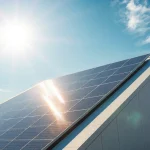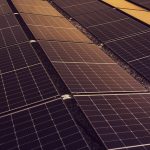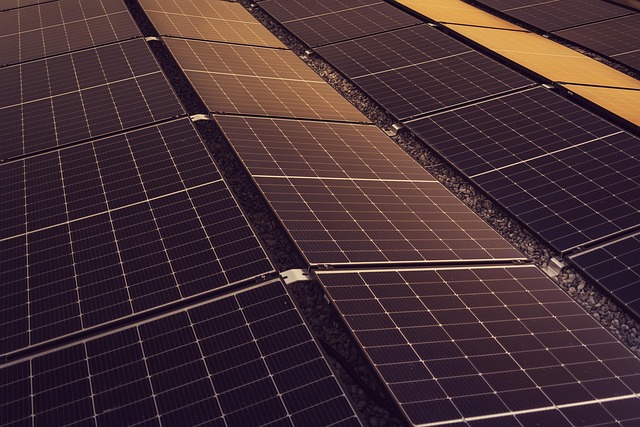Investing in commercial solar panels can transform your business’s energy costs and sustainability efforts. By understanding installation costs, potential savings, and available financing options, you can unlock significant long-term benefits. Beyond reducing bills, solar systems increase energy independence and open opportunities to generate income from excess power. Careful planning helps navigate permissions and maximize your return on investment effectively.
Assessing Commercial Solar Panels: UK Costs, ROI, and Vendor Comparisons
For many UK businesses considering Solar Panel Installation for Businesses, current costs typically range from £16,000 to £60,000 for systems between 2 kW and 5 kW. These systems offer a return on investment (ROI) of 16% to 45%, with many owners reaching the break-even point in just four to five years. Significant annual savings are achievable, over £4,595 on electricity for 2 kW installations, rising to nearly £11,900 for 5 kW setups making them especially attractive in 2025 as energy prices stay unpredictable.
Also to see : How can UK businesses take advantage of e-commerce trends post-pandemic?
Carefully compare vendors on system price, technology options, installation quality, and included warranties. Factors like installer experience, after-sales service, and their support through planning permissions and building regulations are just as important as the panels’ brand or efficiency. Businesses should also consider the diversity of commercial solar panel system designs available, with options for complex roof types, battery integration, and remote monitoring.
Pay close attention to ongoing costs such as panel maintenance (typically £100–£200 per year) and insurance. The space needed for installation and any necessary permissions especially on protected or visible sites may affect both installation speed and initial outlay.
Also to discover : Reimagining environments: insights from a real estate innovator
Types of Commercial Solar Panels and System Components
Commercial solar panels come in several main varieties, each suited for distinct business needs. The most common are monocrystalline and polycrystalline panels. Monocrystalline panels deliver the highest efficiencies—often exceeding 20%—making them well-suited for sites where maximizing power output per square metre is necessary. Polycrystalline options are slightly less efficient but typically cost less to install, providing a balanced choice for businesses with larger roof or ground space.
System efficiency isn’t just about the panels. Core commercial solar system components include modern inverters, which transform solar DC output into usable AC electricity, and solar batteries that store excess energy for use during low-sun periods or power outages. Monitoring systems offer real-time performance tracking, alerting owners to maintenance needs and optimising long-term energy generation. The correct mounting system—whether fixed or adjustable—ensures safety and longevity, accommodating different roof types or ground conditions.
Business installations vary—rooftop solar maximises unused space on company buildings. Ground-mounted arrays are ideal for businesses with ample land. Alternatively, integrated systems are built directly into new construction, merging with architectural elements for seamless aesthetics. Each option requires careful matching to business size, energy needs, and property layout.
Installation Process and Regulatory Considerations
Commercial solar panel installation follows a structured workflow to ensure efficiency and compliance. The process usually begins with an in-depth site survey. Skilled engineers assess your business premises, reviewing rooftop condition, available space, and potential shading. Accurate solar irradiance data and electricity consumption analysis enable precise system sizing.
After survey completion comes system design. Engineers prepare detailed technical drawings and select suitable commercial rooftop solar installations or ground-mount solutions as appropriate. Their designs optimize energy output and adhere to both manufacturer and regulatory requirements.
Procurement swiftly follows, with reputable commercial solar panel installers sourcing components—panels, inverters, mounting hardware—proven for reliability and output. This stage also includes scheduling deliveries and organizing scaffolding if necessary.
The on-site installation phase involves mounting panels, electrical wiring, inverter setup, and integrating monitoring technology for real-time performance tracking. Rigorous commissioning tests confirm every part is safe, functional, and meets standards.
Regulatory challenges can arise at several steps, especially around planning permissions for commercial solar. While many rooftop systems qualify as permitted development, planning is required for listed, historic, or conservation-status buildings. Installers coordinate closely with local authorities, producing documents for building control and ensuring all installations comply with current building regulations and commercial solar system installation guidelines. This approach reduces delays and administrative headaches, letting businesses benefit from immediate energy savings once the system is commissioned.
Financing, Incentives, and Payback for Businesses
For commercial solar systems, initial costs—including panels, inverters, mounting, batteries, and installation—tend to range from £16,000 to £60,000 for small and medium businesses in 2025. Recurring expenses cover annual maintenance (£100–£200) and insurance (about £10–£20 per month or a single payment of £400–£1,600). Larger systems incur higher costs but benefit from better economies of scale, reducing long-term energy expenses on a per-unit basis.
Businesses commonly weigh upfront purchase against leasing options. Purchasing the system outright yields maximum savings over 25 years and independence from electricity price hikes. Leasing, while lowering initial outlay, may involve ongoing payments and reduced direct returns, though it enables more companies to adopt solar technology without large capital commitments.
In 2025, there are no dedicated UK government grants for commercial solar. However, a 0% VAT rate on solar installations and select tax relief options help control purchase costs. Secure planning permissions—needed for listed properties or complex installations—can be time-intensive, but expert installers assist with regulatory aspects.
Payback periods typically fall between 4 and 5 years, with ROIs from 16% to 45%. Larger systems achieve even faster break-even points, unlocking substantial energy savings (up to £11,895 yearly for a 5 kW system) and enhancing sustainability targets.
Business Benefits, Environmental Impact, and Case Studies
Commercial solar energy solutions deliver immediate and measurable value. Businesses benefit from operational savings—systems commonly reduce annual electricity costs by thousands of pounds. For instance, a 2 kW installation typically saves over £4,595 yearly, while larger systems generate proportionally higher savings. This reduces exposure to rising grid prices, securing greater price stability and strengthening long-term financial forecasting.
Beyond savings, solar panels offer energy independence. Onsite generation reduces reliance on the National Grid and provides extra resilience when paired with battery storage. Some organisations generate surplus power, selling it back through mechanisms like Power Purchase Agreements. This transforms rooftop assets into a direct revenue stream.
From an ESG perspective, solar power supports Net Zero ambitions. Every kilowatt-hour produced on-site offsets about 5g of CO2, allowing companies to track and publicise specific emissions reduction. Firms demonstrate leadership in environmental stewardship—enhancing green credentials, which attracts sustainability-minded clients and investors.
Case studies highlight real-world impact. Examples include university and business installations in the UK, with solar systems enabling annual CO2 savings from 5 to over 340 tonnes. Systems also show sector versatility, fitting offices, retail parks, manufacturing, and agriculture—demonstrating scalability for both large enterprises and small businesses seeking sustainable energy transformation.
Selecting Suppliers and Maintaining a Commercial Solar System
Choosing reliable commercial solar companies starts with verifying their industry experience, accreditations, and project portfolio. Top installers should be MCS-certified, have clear safety credentials, and provide comprehensive site surveys tailored to your business needs. Ask about their track record with systems similar in scale or sector to yours. Leading providers will handle permissions and compliance, streamlining the process.
When evaluating commercial solar solutions providers, review the scope of their service contracts. Standard packages should cover design, installation, and ongoing maintenance agreements. Pay close attention to panel and inverter warranties—strong providers offer performance warranties on panels (typically 25 years) and inverters (generally 2 years), ensuring replacement or service if output declines.
A proactive maintenance strategy is essential to limit downtime and maximise system ROI. Modern solar installations use real-time monitoring technology, alerting facility managers to issues and optimising power yields. Most businesses budget annual maintenance (about £100–£200) and periodic component upgrades over the system’s lifespan.
Long-term planning should factor in replacement cycles for inverters and batteries. Reputable suppliers detail long-term upkeep costs and integrate monitoring with predictive maintenance, protecting your investment and supporting continuous, low-carbon energy for years to come.











